
Huawei P30 Pro 256GB detailed review
Huawei’s P30 Pro launched to much fanfare and hype at an event hosted in Paris, which we attended. After a brief hands-on with the phone, it was clear that this is a device that warranted a much closer, much closer look. The company shared the smartphone with us and allowed us enough time to test every aspect of the device thoroughly. Here are our findings
Build and Design
The Huawei P30 Pro follows a very similar design language to last year’s P20 Pro. It’s a slightly bigger smartphone this time around, which is due to the bigger 6.47-inch display. The display is protected by an unspecified type of glass, and there are very minimal bezels. The only real interruption to the front is the dew-drop shaped notch on top.
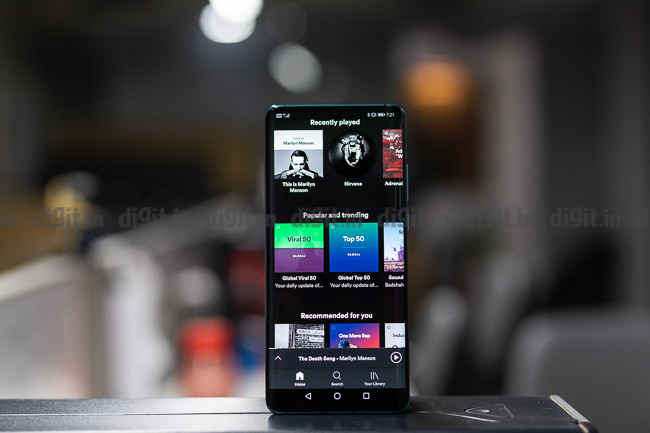
The Huawei P30 Pro sports an all-glass front
On the back, our review unit sports the Aurora finish, a dashing gradient of blue and green. As expected, it does act as an unsavoury repository for your fingerprints, but if you use the TPU case that’s bundled in the box, you get to show off your phone’s gorgeous, fingerprint free finish, and keep this hunk of glass and metal safe. The back also houses the rather large vertical camera unit, which we will talk about in a later section. On the right of the phone’s metal frame, you will find all the buttons you need. The volume rocker is placed towards the upper side while the power button, with its clean red line, lies just below it. There is sufficient space between the two for you to not get the key presses wrong.
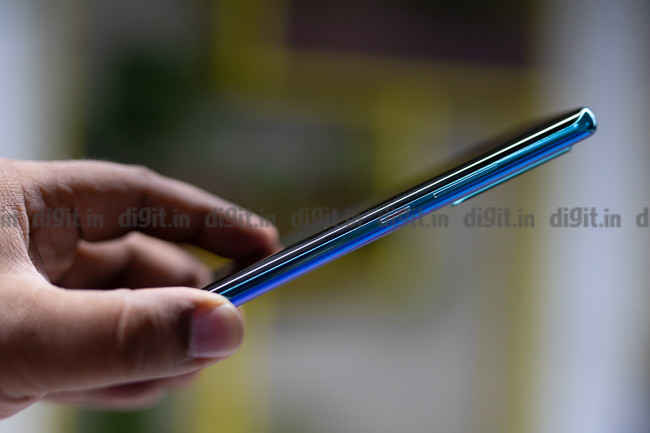
Plenty of space between the power key and volume rocker
The Huawei P30 Pro is also IP68 rated, which means it can withstand being submerged under water and of course resistant to the ingress of dust. Back in the early days of smartphones, there were many instances of dust getting trapped under the display after extended use, but thankfully, that is no longer the case. Overall, the Huawei P30 Pro’s build and design is definitely something we’ve come to like and have no complaints
Display
The Huawei P30 Pro sports a 6.47-inch OLED display, which seems to be free from the major issue plaguing the Mate 20 Pro, the weird colour shifts around the edges. Yes, the P30 Pro also sports a Samsung-like curved panel, but what it doesn’t have is the resolution. Packed into the 6.47-inch panel are 2340×1080 pixels, yielding an overall pixel density of roughly 398 ppi. What is also supports is the DCI-P3 colour profile for wide-gamut colour, meaning that, you could watch HDR videos on this panel. As of now, we were not able to test the feature since Netflix has not enabled HDR video playback for the P30 Pro.
In our testing of the display, we found the default setting to be slightly on the colder side, but nothing that a quick trip to the display settings can’t fix. On the bright side, the panel goes all the way up to 612 lux as noted by our lux meter. On the lowest side, we noted a minimum of 2 lux of light output from the panel, making this easily usable in a dark room.
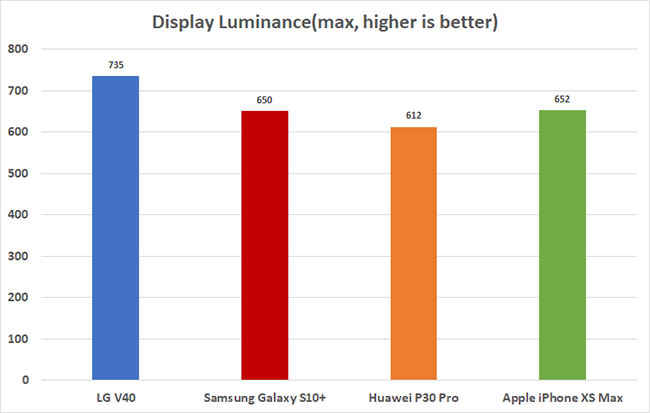
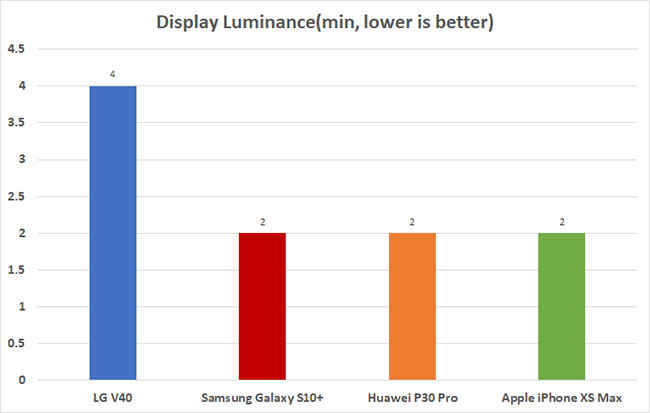
Using the display outdoors is sufficiently bright to be able to use it for reading or watching videos. When used under extremely bright ambient light, the display will crank to the max and retain most of its saturation (you may notice some loss in saturation in the reds).
The curved display definitely needs better palm rejection in order to make one-handed use easier. Depending on the size of your hands, you will either be able to manage one-handed use just fine or struggle as I did.
The only notable let-down with the P30 Pro’s display is the FHD+ resolution. For a smartphone that costs Rs 71,990, it is unreasonable for a company to not give the absolute best. We don’t think “battery life” is a justified reason to leave this feature out. The P30 Pro’s display settings do allow the resolution to be turned down from 1080p to 720p, so there is literally no justification for not giving the people a higher resolution display.
Call Quality
When we said that the front of the Huawei P30 Pro is all glass, we meant it. There is no earpiece on the smartphone, removing the only point on the front that used to be glass-free. Instead, the company has placed a piezoelectric exciter right underneath the display, resulting in an “acoustic surface.” Sony has used this technology on their flagship OLED TVs for a couple of years now, but this implementation by Huawei is surely impressive. The first few times you take calls after setting up the phone, a prompt on the display tells you where to place your ear. The placement is rather natural and a little deviation from the perfect placement won’t hamper your auditory experience. Its a pretty clever trick and we hope that more manufacturers start using the technology. We found that while the speaker itself offered impressive audio levels and good clarity, the microphone too worked well to filter out ambient noise and deliver clean audio even to the person on the other end of the line.
Performance
The Huawei P30 Pro is powered by the Kirin 980 chipset paired with 8GB of LPDDR4x RAM. The chipset features a 2-2-4 core structure, with 2 Cortex A-76 performance cores clocked at 2.6 GHz, 2 Cortex A-76 medium cores clocked at 1.92GHz and four Cortex-A55 efficiency cores clocked at 1.8GHz. To test the effectiveness of the system, we ran the phone through our extensive suite of tests, which we break down into CPU, GPU and real-life testing.
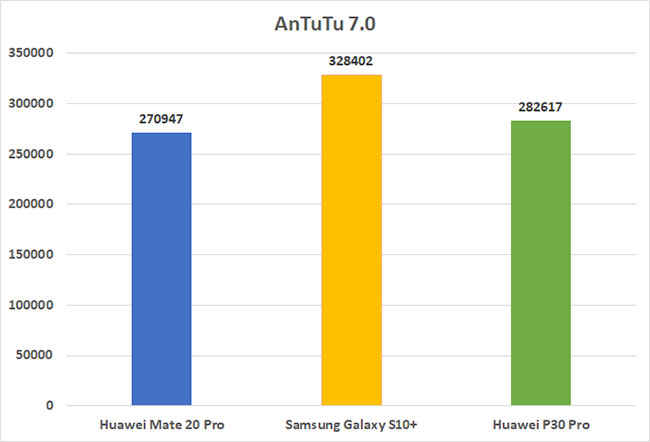
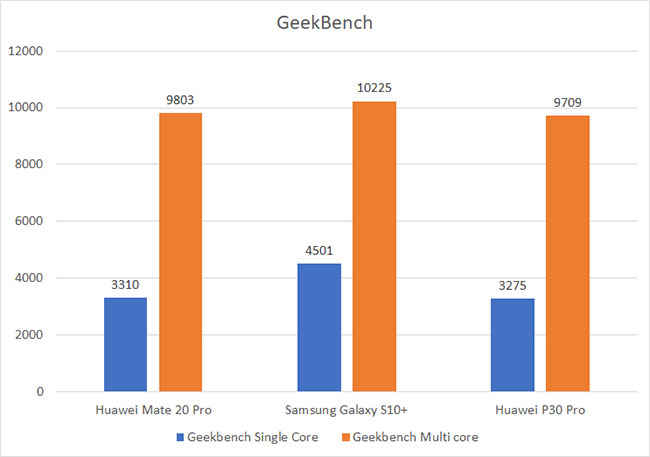
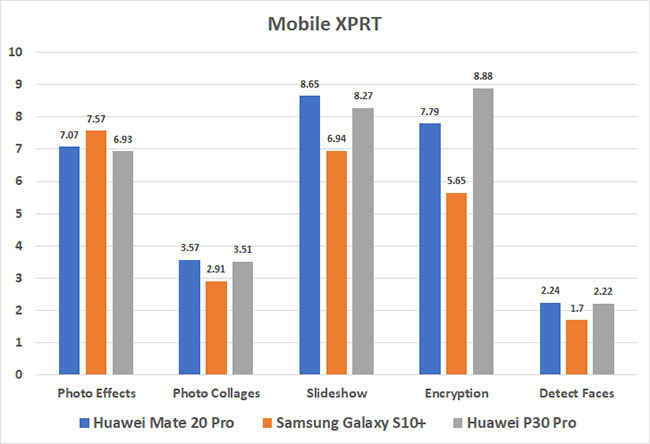
While the benchmark numbers do put the P30 Pro behind the Samsung Galaxy S10+, on a day to day basis, the story is somewhat different. In the little more than two weeks I’ve been using the phone, it left no room for any complaints. We even recorded some gaming metric that reflects the phone’s performance with real applications and games.
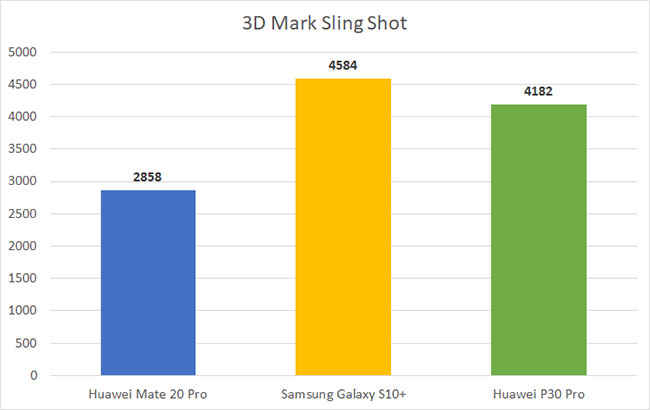
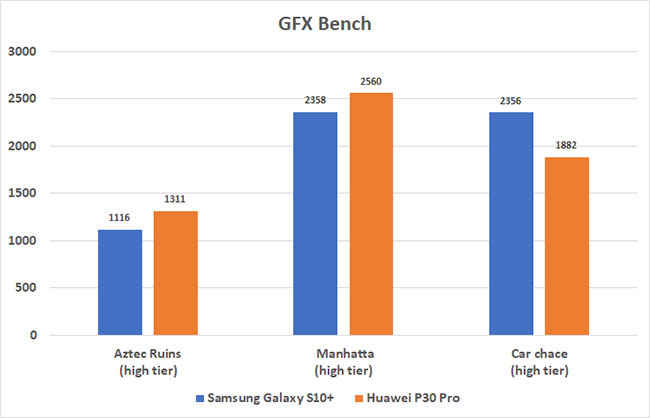
The Kirin 980-powered phone offers adequate performance for any task you may throw at it, whether it’s gaming, photo editing or even conducting business. While the performance is satisfactory now, we are more concerned about what it would be like 6 months from now, so we will revisit this section one again in 6 months.
Primary Camera
The Huawei P30 Pro hero feature is the camera stack, which features a number of firsts. The 40-megapixel sensor uses a novel pixel arrangement which uses yellow pixels instead of green, allowing it to apparently collect more light. The other notable feature here is the 5x optical zoom lens, which also extends the zoom to 10x hybrid. We have done a separate camera review examining each part of the camera’s performance in great detail, which you can refer to here. However, a clear summary of our findings are below.
In our extensive testing of the Huawei P30 Pro’s camera, we noted a number of interesting facts that everyone should know. For starters, the RYYB sensor has shown to be immensely effective in low light, capturing shots in practically pitch-dark situations. We were surprised to see the software process really bring out the colours and illumination, albeit at the sacrifice of detail. IT is still very impressive, however, to have taken a photo of a completely unlit landscape, only to have the image be well light, and the stars also show in the sky.

You can actually see the stars in the sky in this shot ( f/1.6, ISO 6400)

The primary lens allows you to get really close to subjects
The ultra-wide 16mm lens on the P30 Pro is again prone to some distortion as will always be the case with wide angle lenses, but thanks to the presence of auto-focus, allows for more flexible use of the camera. The images do come out pretty sharp though, and while day time performance is impressive, low light shots could have been far better. They don’t have noise, but they do exhibit significant detail loss due to noise reduction.

The 16mm ultra-wide lens exhibits some barrel distortion
The telephoto lens is another hero feature of the P30 Pro, offering 5x optical zoom thanks to Leica’s periscope design which allowed the company to fit a long lens into a relatively thin body. The 5X optical zoom is incredibly powerful in of itself, offering a 135mm field of view. The 10x hybrid zoom extends this to 270mm, an delivers surprisingly clean images as long as they’re shot in good light. Given that the telephoto lens has an aperture of f/3.4 and a 1/4-inch sensor, the total light collecting capabilities of this combination is pretty low. Additionally, trying to shoot in low light at anything over 5x results in some level of shake. While the telephoto lens is great for shooting animals and birds, it isn’t very effective once the sun starts to go down.

Shot at 5x optical zoom
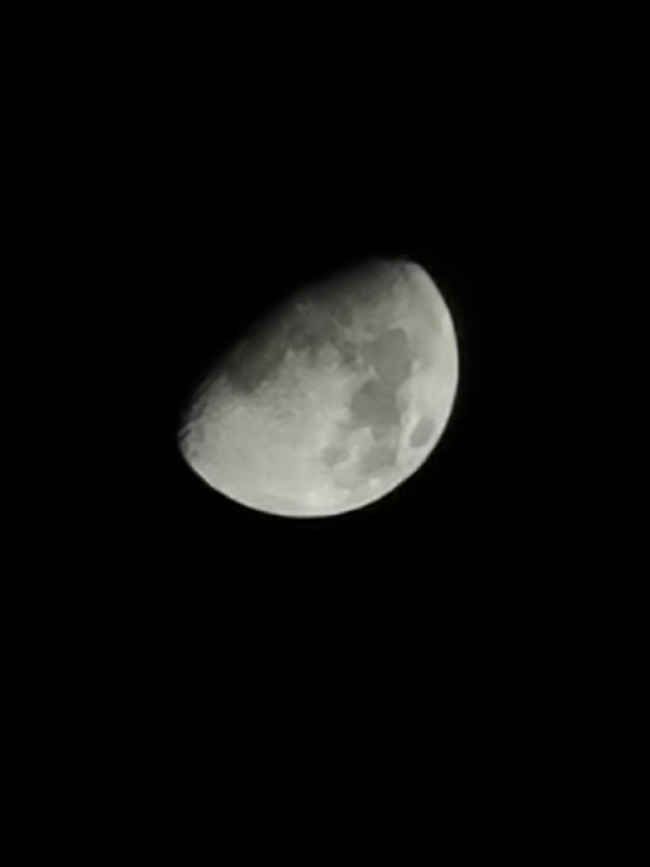
The moon shot at 50x digital zoom (f/3.4, ISO 250)
Let’s now talk about the 50x zoom that’s offered by the P30 Pro. We were able to walk away with some photos of the moon, thanks to the 1350mm focal length offered by the digital zoom. However, trying to hand-hold any shot at that focal length is excruciatingly painful due to the motion introduced not only by your hand but also by the optical image stabilisation assembly. Even the minutest of movements translate to massive shifts in the framing. The resulting image, however, is borderline usable, especially depending on whether it was shot in the day or night. Day time shots are ever so slightly sharper than those taken at night.
In terms of autofocus and shutter lag, we didn’t notice any shutter lag while shooting in the 10MP mode, or with the camera recording images at the sensor’s full 40 megapixels. The only time there was a slight delay was when we chose to shoot in Pro mode with RAW capture enabled. This is expected, given that a 40-megapixel RAW file weighs in at a whopping 80 megabytes. When it comes to autofocus, the primary and telephoto lenses feature phase detect autofocus which worked well in all lighting situations. Normally, the camera would be able to detect the subject automatically, but even in situations where we chose the point of focus manually, the camera quickly, and reliably, locked focus. The one time we did face issues was trying to focus in low light on subjects that were red in colour. It could be just a quirk of the review unit we received, but we don’t see why this can’t be fixed or improved with a software update.
Selfie Camera
The Huawei P30 Pro offers a 32-megapixel front-facing camera for those who love selfies. We feel that the resolution is a little on the excessive side, especially since there is no Pixel Binning present on this sensor to improve the image output. Given that selfies usually only end up on social media websites with a display resolution lower than 2MP, an 8MP camera would have also sufficed, but it would have been even better to have binning.
Regardless, the camera does take sharp, vibrant images in the day time. The camera is able to expose properly even for backlit subjects, which is really helpful when you don’t have control on the direction you’re shooting in. Low light selfies are still usable but have significant detail loss due to noise reduction.

Indoor selfies are noise-free, but lack detail
What is nice, however, is that despite the shooting condition, there is negligible shutter lag, not only in between taking shots but also in the time the shutter is pressed to when the shot is taken.
Battery Life
The Huawei P30 Pro packs a 4100mAh battery, which by all means, has left us very impressed. For starters, it clocked 10 hours and 11 minutes on the Geekbench battery test, an impressive number in of itself. On our video loop test, the battery lasted well over 12 hours of video playback with the brightness set to 50 percent. While navigating for an hour, we only clocked a battery drop of 9 per cent while 15-minute PUBG session cost us 5 percent battery. The best part, however, is the fact that the phone charges from 0 – 100 in 71 minutes flat, which is damn impressive when you factor in the fact that this is a 41mAh battery. The only downside is that in order to achieve these impressive numbers, you will need to carry the supplied charger AND cable with you at all times since Huawei doesn’t sell their SuperCharger as an accessory in India yet.
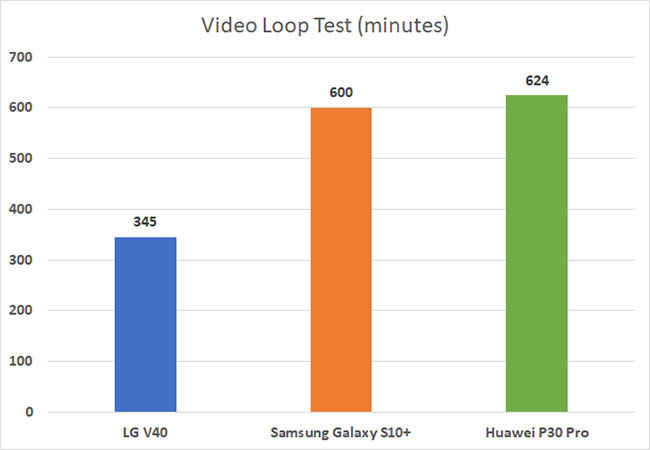
Bottomline
The Huawei P30 Pro is the most expensive Huawei smartphone to date and to some, it may be hard to justify the price. What the phone does get right is the camera performance, which sets a new benchmark in our tests. The Leica lenses produce sharp, crisp images when paired with the right shooting conditions, however, the primary camera manages to impress us even in impossible lighting. On our performance benchmarks, the phone doesn’t clock numbers as high as the Exynos 9820 powered Samsung Galaxy S10+, but does outperform the older Huawei Mate 20 Pro which is powered by the same Kirin 980 chipset. The phone has not only excellent battery life, but also tops up very quickly, as long as you use the supplied charger and cable. The only flaw we feel is the FHD+ display, whose resolution should have been higher, especially for the asking price. Additionally, the 256GB of storage may not be enough for photographers who want to shoot extensively in RAW, a problem that is heightened by the fact that even though the P30 Pro offers expandable storage, you will have to use Huawei’s proprietary nano-memory cards, which are not sold in India as yet.
[ad_2]
Source link







